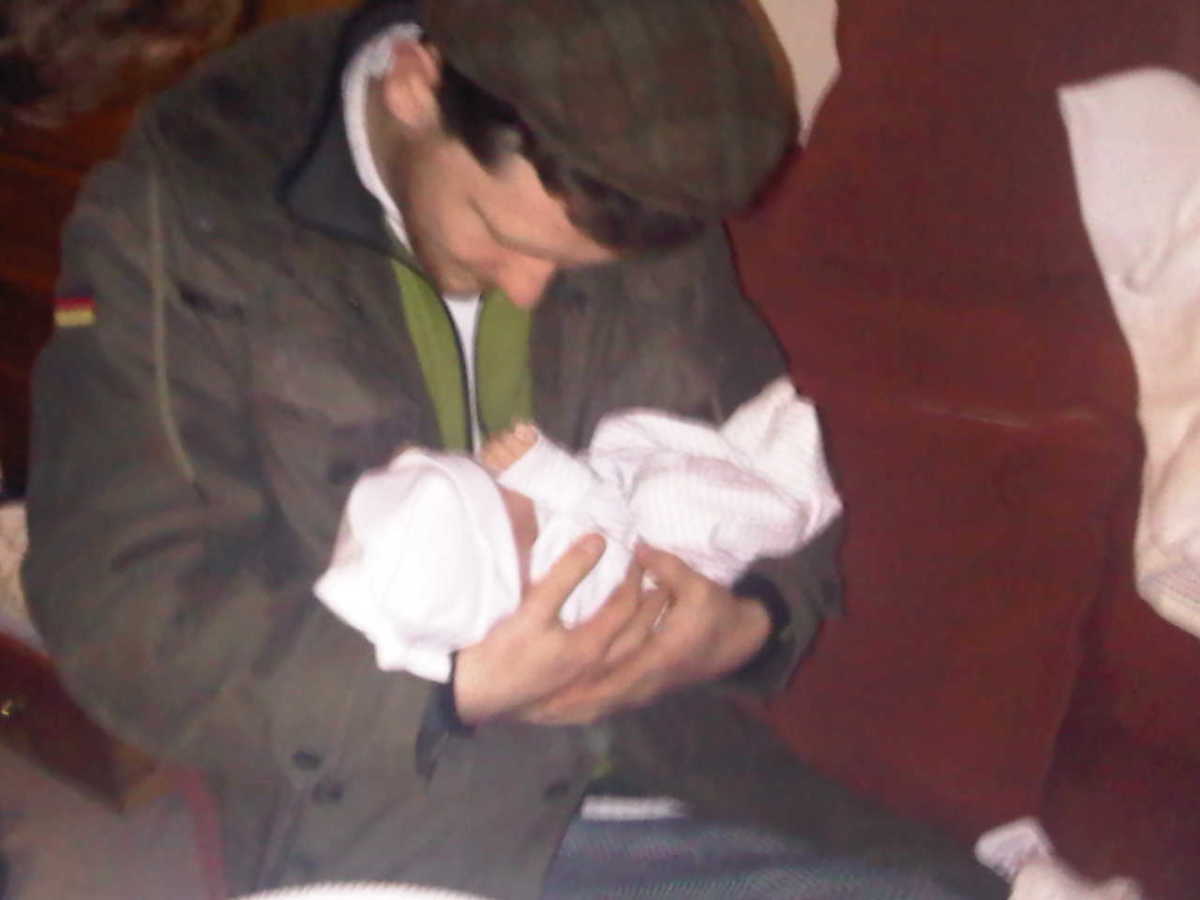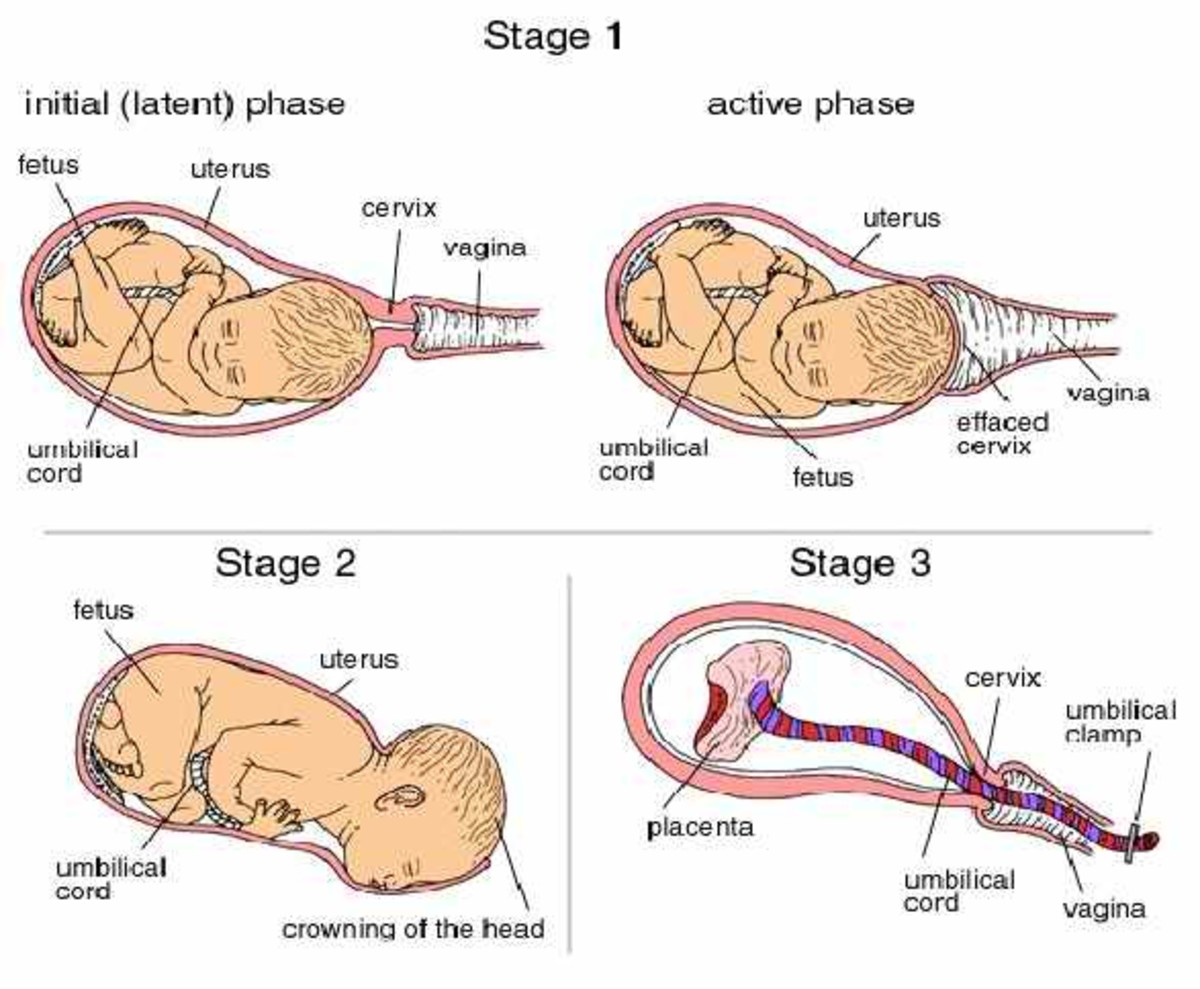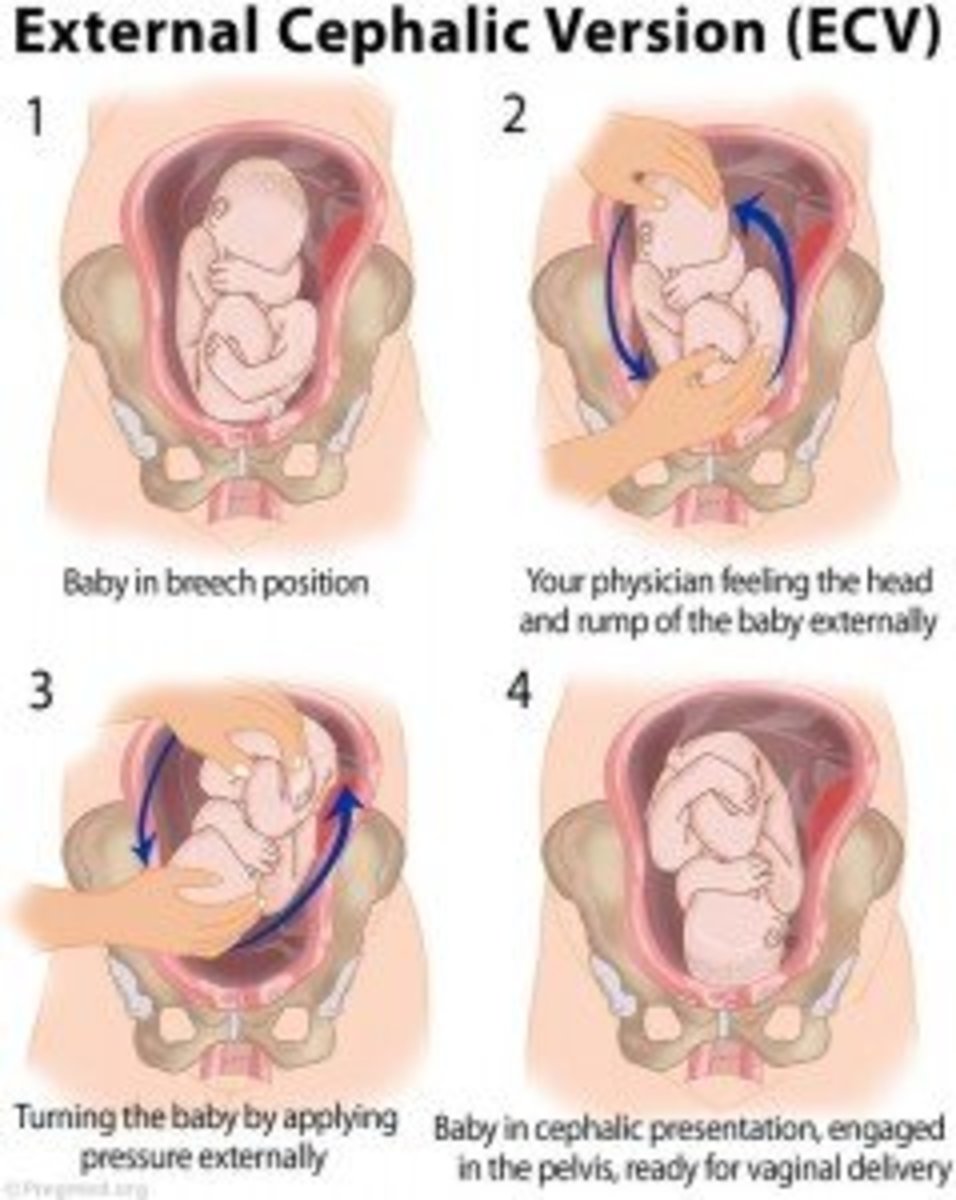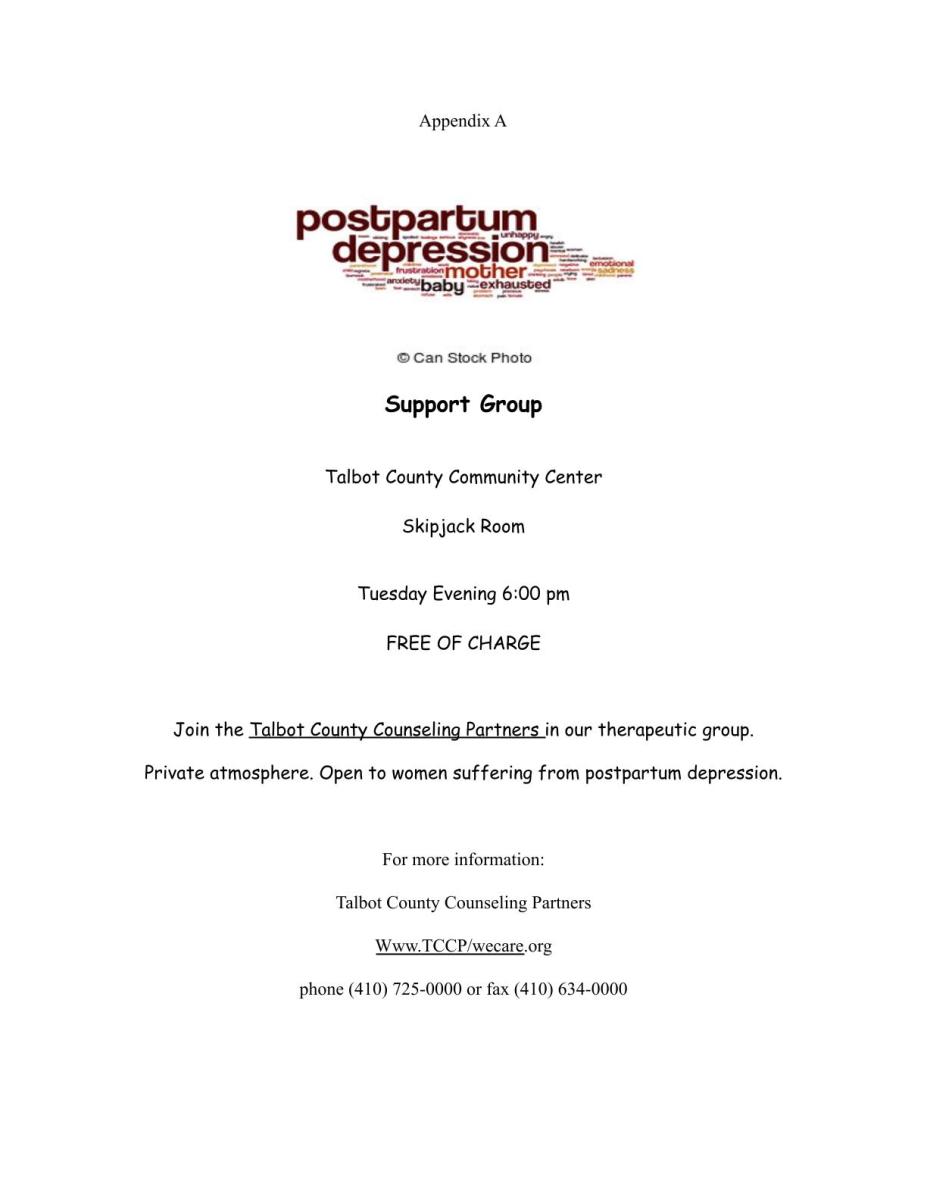A Doula Guide to Coping During the Latent and First Stages of Labour
Why divide labour into stages?
Lots of expectant mums ask the question towards the end of pregnancy, am I in labour? Be reassured, you will know!
Dividing labour into stages can be helpful when enabling a mother to be to understand what is going to be happening to her during the labour and birth process. The body goes through various changes in order to go from being tightly closed and providing a safe place for a baby to grow to opening up and expelling a new life into the world.
As I wrote in another hub about labour, a great many of our impressions about labour come from popular media, where the expectant mother will go from zero to clutching her belly and screaming in thirty seconds flat. I have never known any woman to have a labour that started like that!
The start of labour, the ‘latent phase’ can actually go on relatively unnoticed for weeks. The body is undergoing such a dramatic reversal of role, as described above, that it is understandable that mother nature should decree that this is achieved gradually.
Am I in labour? What is pre-labour?
Let’s talk in a little more detail about the latent phase of labour, or as it’s sometimes called, pre-labour. Braxton Hicks contractions are the practice contractions that mothers start to feel during the last 8 weeks or so of pregnancy. They are not at all painful, but the belly does go noticeably hard, and changes in appearance as well as feel, to the mother and also to an observer. For 30 seconds or so, the belly will harden to the touch, and mum will feel a drawing up sensation inside, but nothing more.
During the latent phase, Braxton Hicks contractions can become much more regular, last a little bit longer, and the sensations accompanying them may start to become harder and harder to ignore. They may even begin to resemble vague period pains. This is the womb beginning one of the early preparations, which is the thinning of the cervix.
The cervix towards the end of pregnancy is around three centimetres thick, maybe even more. When the thinning process happens the cervix becomes softer in preparation for opening, and the mucous plug contained within the os (cervical opening) is loosened and expelled. The ‘show’ as it is called, is a plug of mucous which sits in the os for the whole pregnancy and protects the baby’s environment. This is often seen is an exciting marker that ‘something’ is happening!
Other signs of the beginning of labour
- Low back-ache, coming and going
- Intermittent diarrohea
- Period-type pains
- Loss of the mucus plug
- Increased secretions
- Feeling of something being 'strange' or 'different'
- Feeling of excitement, or 'butterflies' in the stomach
Is it starting?
All of these signs may be present, or none of them. If you don’t have any of these signs, it doesn’t mean that the body isn’t doing its job and won’t be ready when the time comes…everyone is an individual and things can vary greatly from woman to woman, and from pregnancy to pregnancy in the same woman.
This is exciting! But try to stay cool. This phase takes time; just treat it as a normal day, walk, make a cake, shower or bath. Both these last things may actually slow things up a little, but don’t worry. Do something to take your mind off it, and if you want to try to sleep or relax then take a paracetamol, a mild painkiller suitable for pregnancy. If you can’t rest or don’t want to, then sit on a birth ball with your knees level with or lower than your hips, and do small circles to stay nice and loose. Wiggling your hips, walking and dancing will help baby to find a good position on the head of the cervix. Squatting is a position best saved for later on in labour.
Positive mindset
Breathing should be long, deep and slow, be conscious to not hold the breath, which will cause tension. Remember, mind and emotion follow the breath. Master the breath. Yoga is really good for this, you might want to check out the ‘Ocean breath’ Breath deep, into the pit of your belly, in order to keep you on track.
As contractions build, some people (usually partners who like to feel a semblance of ‘control’ over the event!) will want to time the contractions. There are even several apps for your phone to help with this. When talking to mums about labour, however, I try to discourage this kind of linear thinking about labour. Labour is an organic, natural process, and trying to measure it in hours and centimetres encourages closed-ended thinking and can lead to disappointment and frustration when it doesn’t appear to be going right. A centimetre an hour is a hospital-type protocol for measuring how long labour is taking, and deciding when to begin interfering. Some mums can go from 5 to 10 centimetres in a moment, rather than the ‘expected’ five hours!
The other name for the first stage of labour is the ‘active phase’ The cervix is fully effaced, or in other words, it has thinned out completely, ready for dilation to start. The upper segment of the uterus has the unique property, called retraction. This describes the ability of the muscles to contract and shorten, like other muscles, but unlike any other kind of muscle, it retains the shortened state even when it relaxes between contractions. When the cervix is fully dilated, with an opening of around 10cm, the labour is at transition stage, and the first stage is over.
Ina May Gaskin's Sphincter Law
Ina May Gaskin, a world renowned midwife coined this phrase to explain that the cervix behaves like any other sphincter in the body, in that it can go from being open, to closing down, if the conditions aren't right. Privacy, warmth and not feeling observed are very important in not hindering the opening of the cervix. Its the same as when you need to go to the toilet.
Labour isn't linear!
The first stage of labour is characterised by regular contractions, which build in frequency and strength as time goes on. This gradual build-up allows the mother’s body to cope with the increasing strength as more and more endorphins flood her system. In hospital they might like to perform frequent V.E.s (Vaginal Examinations) to find out how far along the labour is, but unless absolutely necessary, regular examinations are best avoided.
Labour does not progress in a linear, orderly fashion, and as mentioned in the previous hub about the latent stage of labour, a woman can go from 5 to 10 centimetres in a matter of moments. So examining her and telling her she’s ‘only 5 centimetres’ is counterproductive. She may be only half an hour or so away from delivery. Having a woman lie down and subjecting her to an intrusive and sometimes painful examination is no way to encourage the production of oxytocin or indeed, lessen the production of adrenaline.
There are ways of telling how labour is progressing, without performing an VE. Her appearance and behaviour will tell you how she’s progressing. Early on in the first stage, mum will be chatting and laughing (hopefully!) between contractions, moving about, making eye contact and generally behaving as if she’s not in labour, until a contraction happens, when she will break off for a few moments, to breathe through.
As labour moves on, mum will seem to turn in on herself as though she is concentrating very hard on something, and does not wish to be disturbed. Please ensure everyone around her respects this with whispers, no unnecessary chatter or disturbance, and dim lighting for privacy and because light stimulates the neo-cortex.
Her feet may have been feeling cooler, now her calves will begin to cool down as blood is diverted to the uterus.
How can I make labour start?
Did your labour start naturally?
Have my waters broken?
- The water bag may break before labour starts, or at any time during the labour.
- Sometimes babies are born with the waters intact, 'born in the caul' A lucky sign!
- The escaping waters might gush, if the head is still high, or simply trickle
- It can be difficult, even for a midwife, to tell if it is amniotic fluid or urine. There is a test stick.
- The waters might be stained with meconium (baby's bowel movement) this can be a sign of distress
- The water bag protects baby's environment. Hospitals have varying protocols but lots like labour to have started within 24 hours of the bag breaking.
Longer, stronger, more frequent
As labour progresses, contractions become longer, stronger and more frequent. What are the best coping mechanisms for comfort and to not hinder the progress of labour?
Birth attendants should allow and encourage you to follow your instincts and listen to our body regarding your needs. Sometimes you will want to be upright, moving around, eating, and other times you might need to sleep or rest. Being upright and moving around, circling and wriggling the hips, squatting on a birthing ball are all great ways of giving the baby room to move into position deep in the pelvis. The birthing ball is useful for leaning on whilst kneeling forward.
It is important to change position frequently, and you can sometimes find a position which is comfortable and be reluctant to move. It is important to remember that staying in one position is not a good idea, as it can cause uneven dilation of the cervix, with pressure in one particular area resulting in a ’lip’ of cervix being incompletely dilated.
Ina May explains 'sphincter law'
Deep in labour land
You are now between 7 and 9 centimetres dilated, and have certainly stopped wanting to converse with anyone between contractions. You may still answer, or make a small connection, or want eye contact and a hand to hold, or you may want none of this, and be totally inwardly focussed. This is a good sign that the hormones governing labour are in full flow, and that everything is progressing. If you have access to a birth pool, or a bath of warm water, now is the time. The water should be body temperature, and should come up to your chest. The sudden flow of hormones caused by immersion in warm water (think about how it feels to sink into a hot bubble bath after work...aaahhhh!) may cause a very rapid progression in the labour.
From labouring well, you may suddenly feel very agitated losing your focus and feeling that you can't do it, and can't go on. You may even feel a surge of fear. This is the totally natural way that the body changes gear from relaxing and opening, to active and ready to allow the baby to move down and for you to start pushing, A rush of adrenaline is occurring, which can feel alarming, but is perfectly natural and necessary. You are now nearing the end of the first stage of labour, and the beginning of the transition phase!

Check your understanding of the needs of a labouring woman
view quiz statisticsWhat should I do whilst this is all happening?
Relax! Or, get on with your life as usual. Find something to take your mind away from obsessing about labour, as this might actually inhibit it. Cook, eat if you wish, sleep if you want. Go for a walk, clean the house...just stay cool, Mother Nature is in the driving seat and your body is made to do this job. All the best to you!
This content is for informational purposes only and does not substitute for formal and individualized diagnosis, prognosis, treatment, prescription, and/or dietary advice from a licensed medical professional. Do not stop or alter your current course of treatment. If pregnant or nursing, consult with a qualified provider on an individual basis. Seek immediate help if you are experiencing a medical emergency.
© 2012 Jil Wild Manning





